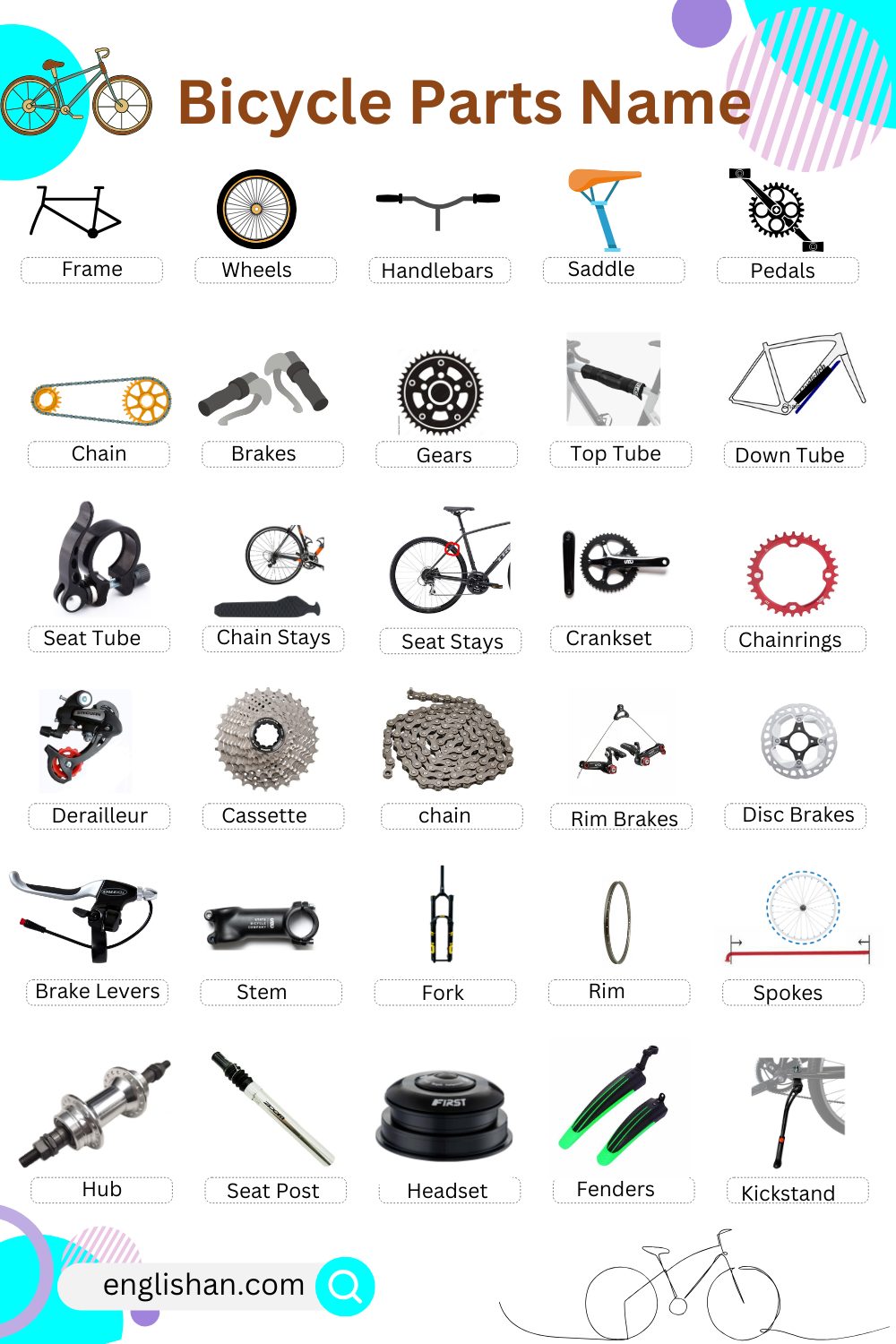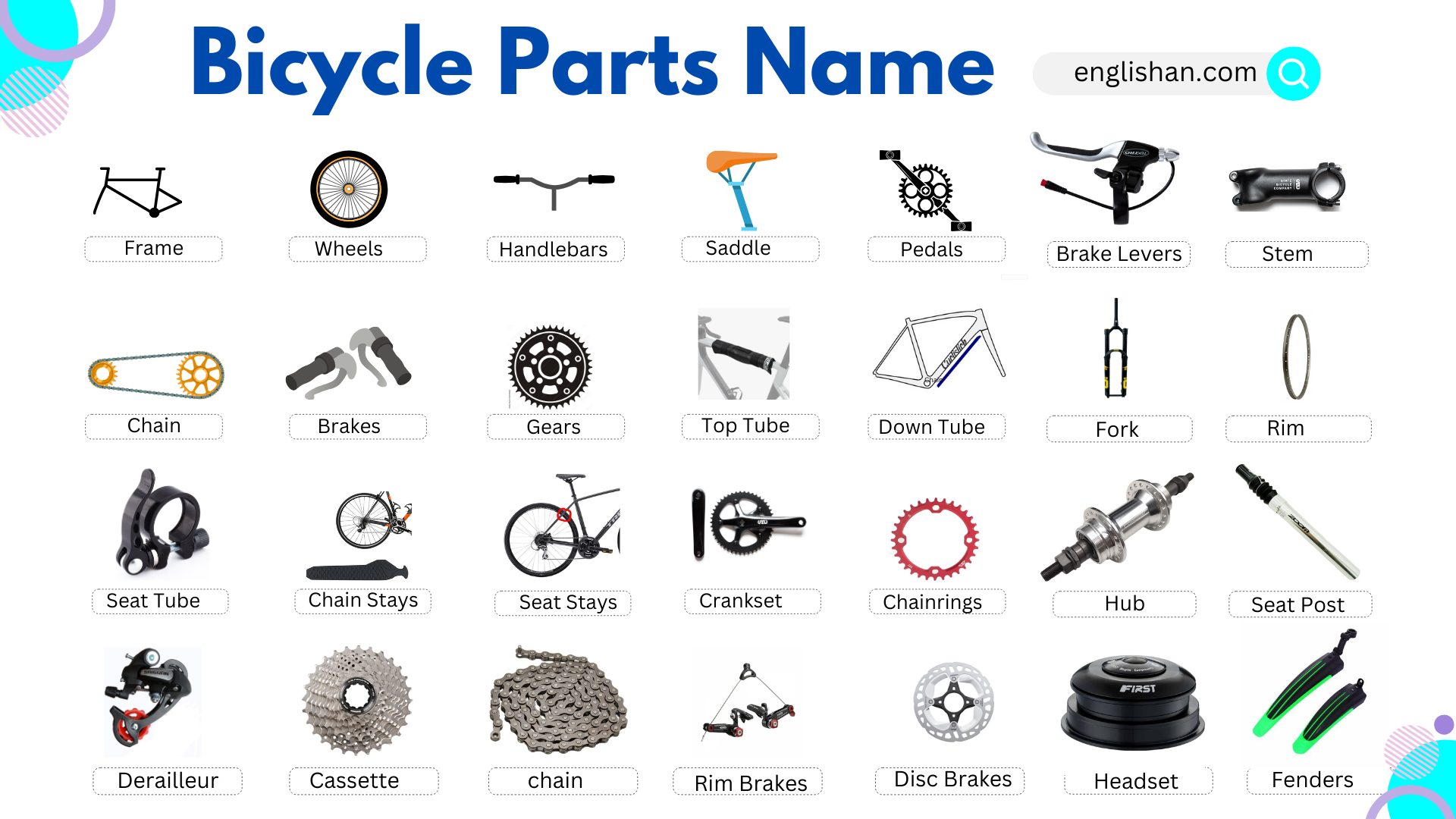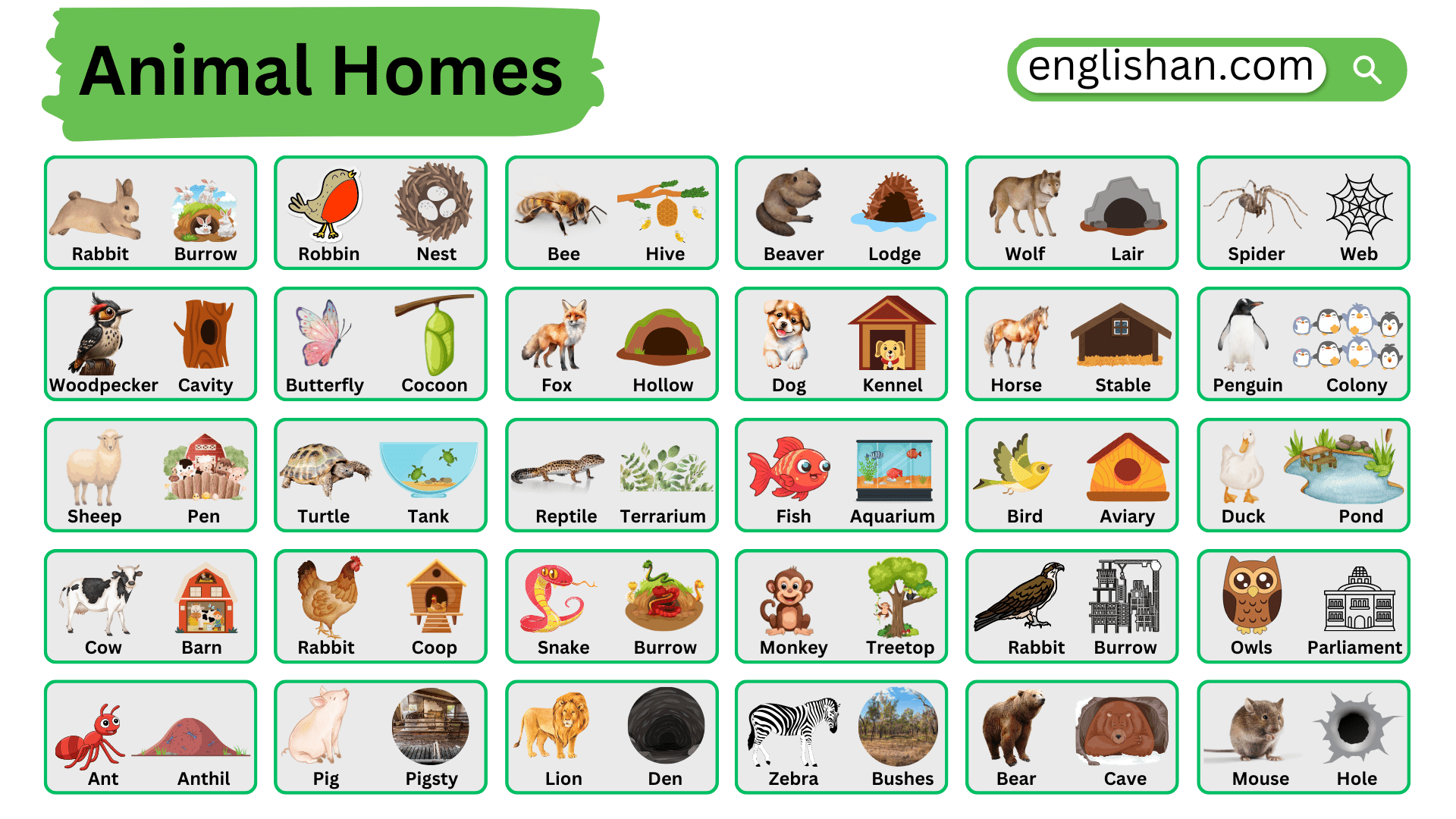Contents
In this blog post, you will learn the names of bicycle parts and their functions, from basic to advanced components. Understanding these terms will help you talk about bicycles easily in English. Whether you’re new to cycling or want to improve your vocabulary, mastering the different parts of a bike will make it simpler to describe how bikes work. Expand your knowledge and improve your language skills by learning the key parts of a bicycle.
Want to learn more vocabulary? Visit our vocabulary category for more helpful lessons on various topics.
Main Bicycle Parts Names
Let’s start with the main parts of a bicycle that every rider should know. These are the essential components that make up a standard bike.
- Frame: The frame is the main structure of the bicycle. It holds all the other parts together. Frames come in different sizes and shapes, depending on the type of bike.
- Wheels: A bicycle has two wheels, each consisting of a rim, spokes, and a hub. The tire is mounted on the rim and is what makes contact with the ground.
- Handlebars: The handlebars are used to steer the bicycle. They are connected to the front wheel and allow the rider to control the direction.
- Saddle: The saddle, or seat, is where the rider sits. It’s mounted on the seat post and can often be adjusted for height.
- Pedals: The pedals are where the rider’s feet go. They are attached to the crankset and allow the rider to propel the bike forward.
- Chain: The chain is a metal loop that connects the pedals to the wheels, helping to drive the bike forward.
- Brakes: The brakes are crucial for safety. They allow the rider to slow down or stop. There are different types of brakes, including rim brakes and disc brakes.
- Gears: Gears help the rider adjust the bike’s resistance. They are especially useful when riding uphill or on rough terrain.

Parts of the Bicycle Frame Name
Understanding the bicycle parts names is essential for every rider. Let’s start with the main parts of a bicycle that every rider should know. These are the essential components that make up a standard bike.
- Top Tube: This is the horizontal bar that connects the front of the frame (near the handlebars) to the back (near the seat post).
- Down Tube: The down tube runs from the front of the bike to the bottom bracket, where the pedals are attached.
- Seat Tube: The seat tube runs from the saddle to the bottom bracket, holding the seat post in place.
- Chain Stays: These are the two tubes that run parallel to the chain, connecting the bottom bracket to the rear wheel.
- Seat Stays: The seat stays run from the top of the seat tube to the rear wheel, helping to support the weight of the rider.
The Drivetrain: How a Bicycle Moves
The drivetrain is one of the most crucial sections when considering bicycle parts names. It includes several key components that power the bike, allowing it to move forward.
- Crankset: The crankset is attached to the pedals and is responsible for turning the chain. It consists of the crank arms and the chainrings.
- Chainrings: These are the round, toothed rings attached to the crankset. The chain loops around the chainrings, turning them as you pedal.
- Derailleur: The derailleur is a mechanism that moves the chain between different gears. There are front and rear derailleurs on most bikes.
- Cassette: The cassette is a set of gears located on the rear wheel. The derailleur moves the chain across these gears to change the bike’s speed.
- Chain: The chain links the pedals to the wheels, transferring the energy from your pedaling to the bike’s motion.
Braking System Bicycle Parts Names
The braking system is a vital part of any bicycle, and knowing the specific bicycle parts names associated with braking ensures that you can maintain safety and control.
- Rim Brakes: These brakes work by squeezing the rims of the wheels, creating friction that slows the bike down. They are lightweight and commonly used on road bikes.
- Disc Brakes: Disc brakes use a metal rotor attached to the wheel hub. When you apply the brakes, calipers squeeze the rotor, slowing the bike down. They provide better stopping power, especially in wet conditions.
- Brake Levers: The brake levers are located on the handlebars and are used to engage the brakes. Pulling the levers applies the brakes and slows the bike.
Steering and Control Parts
Steering is all about control, and it’s achieved through the handlebars and several other components that work together.
- Handlebars: The handlebars are the main point of control. They come in various shapes, including flat bars, drop bars, and riser bars, each suited to different types of riding.
- Stem: The stem connects the handlebars to the steering tube of the fork. It determines the reach and height of the handlebars.
- Fork: The fork holds the front wheel and connects it to the frame. It allows the wheel to pivot, enabling steering.
Parts of Wheels
Wheels are fundamental to the bike’s operation, and knowing each bicycle parts names related to the wheels, such as rims, spokes, and hubs, is important for maintenance and repair.
- Rim: The rim is the outer edge of the wheel that holds the tire in place. Rims come in different sizes and materials, depending on the bike’s purpose.
- Spokes: Spokes are the thin rods that connect the rim to the hub, providing strength and stability to the wheel.
- Hub: The hub is the center part of the wheel that connects to the axle. It allows the wheel to spin freely.
Additional Bicycle Parts Names and Components
Besides the main parts, there are several additional components that enhance the bike’s functionality and comfort.
- Seat Post: The seat post is the tube that connects the saddle to the frame. It can be adjusted to change the height of the saddle.
- Headset: The headset is the set of bearings that allow the fork to rotate smoothly within the frame, enabling steering.
- Pedals: Pedals come in various styles, including flat pedals and clipless pedals. They are where the rider places their feet to propel the bike.
- Fenders: Fenders are accessories that protect you from mud and water splashes, especially when riding in wet conditions.
- Kickstand: A kickstand is a small stand that allows the bike to be parked upright without leaning against something.
FAQs:
Here are the main parts of a bicycle:
1. Frame
2. Wheels
3. Tires
4. Handlebars
5. Pedals
6. Seat (Saddle)
7. Chain
8. Brakes
9. Gears
10. Crankset
11. Fork
12. Derailleur (for shifting gears)
13. Spokes
14. Rim
15. Bell or Horn
These are the key parts that make up a bicycle!
A 20-inch bicycle refers to a bike with wheels that are 20 inches in diameter. These bikes are commonly designed for:
Kids: Ideal for children aged 6-10 years.
BMX Bikes: Used for stunts, tricks, and racing.
Folding Bikes: Compact and easy to store.
The size makes them versatile and easy to handle, especially for smaller riders or specific activities like BMX riding.
The front cog on a bike is called the chainring. It is attached to the crankset and connects to the bike’s chain, which helps drive the rear wheel when you pedal. Some bikes have one chainring, while others have multiple for gear shifting.
The number of gears on a bike depends on the type:
1. Single-speed bikes: Have 1 gear (no shifting).
2. Multi-gear bikes: Usually have 3 to 30 gears.
More gears make it easier to ride on hills or different terrains.
You May Also Like






